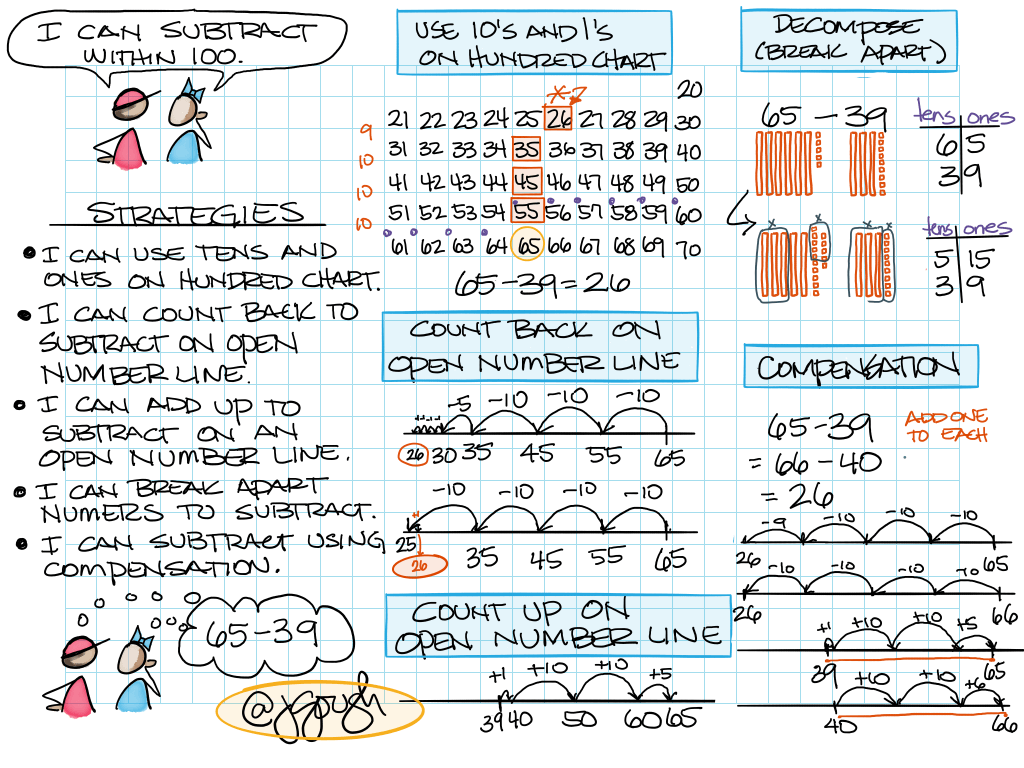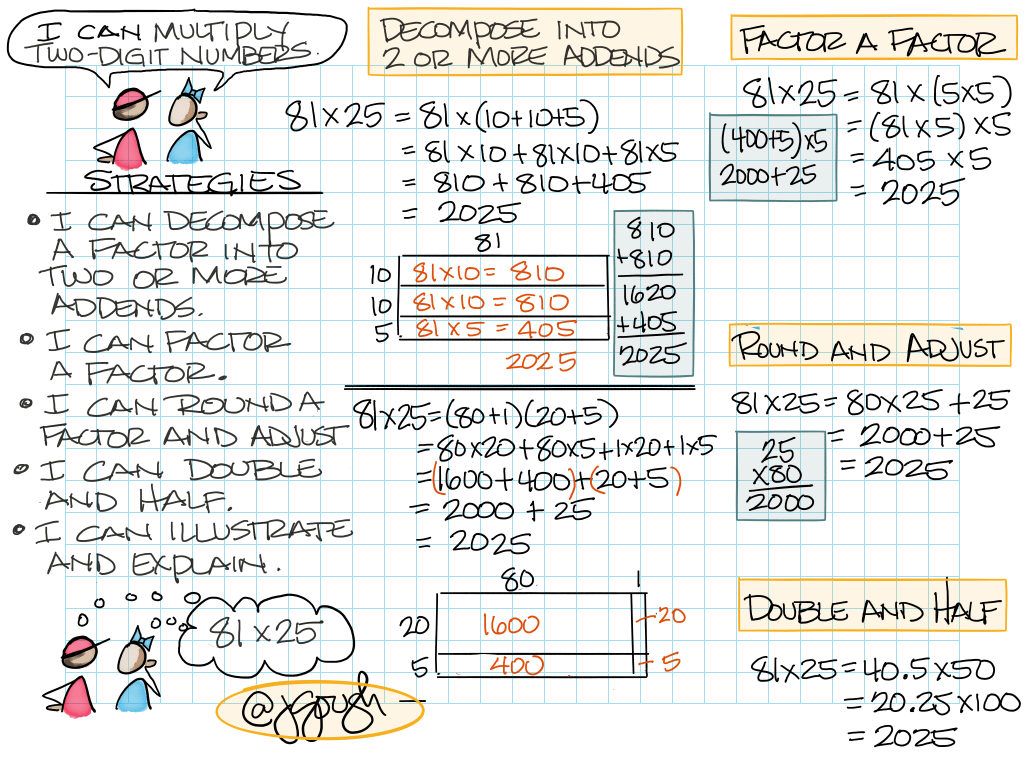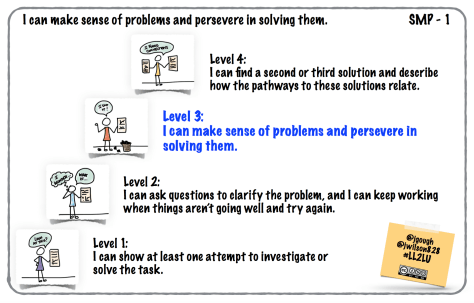Week Two of Embolden Your Inner Mathematician
We commit to curation of best practices, connections between mathematical ideas, and communication to learn and share with a broad audience.
Course Goals:
At the end of the semester, teacher-learners should be able to say:
- I can work within NCTM’s Eight Mathematical Teaching Practices for strengthening the teaching and learning of mathematics.
- I can exercise mathematical flexibility to show what I know in more than one way.
- I can make sense of tasks and persevere in solving them.
Today’s Goals
At the end of this session, teacher-learners should be able to say:
- I can use and connect mathematical representations. (#NCTMP2A)
- I can show my work so a reader understand without asking me questions.
From Principles to Actions: Ensuring Mathematical Success for All:
Use and connect mathematical representations: Effective teaching of mathematics engages students in making connections among mathematical representations to deepen understanding of mathematics concepts and procedures and as tools for problem solving.
Learning Progressions for today’s goals:
- I can use and connect mathematical representations.
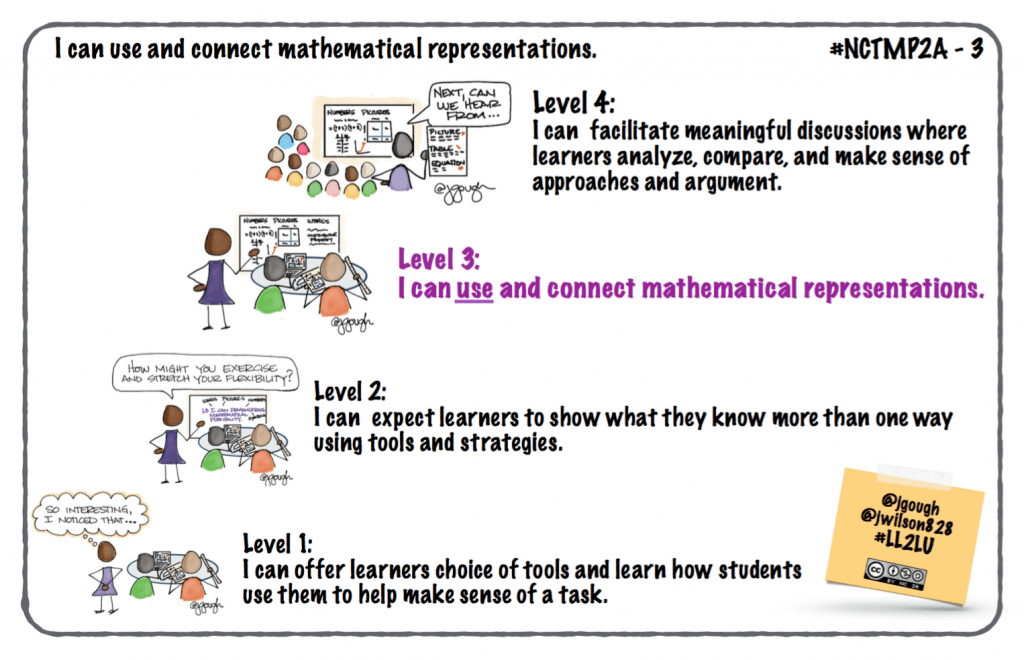
- I can use and connect mathematical representations.
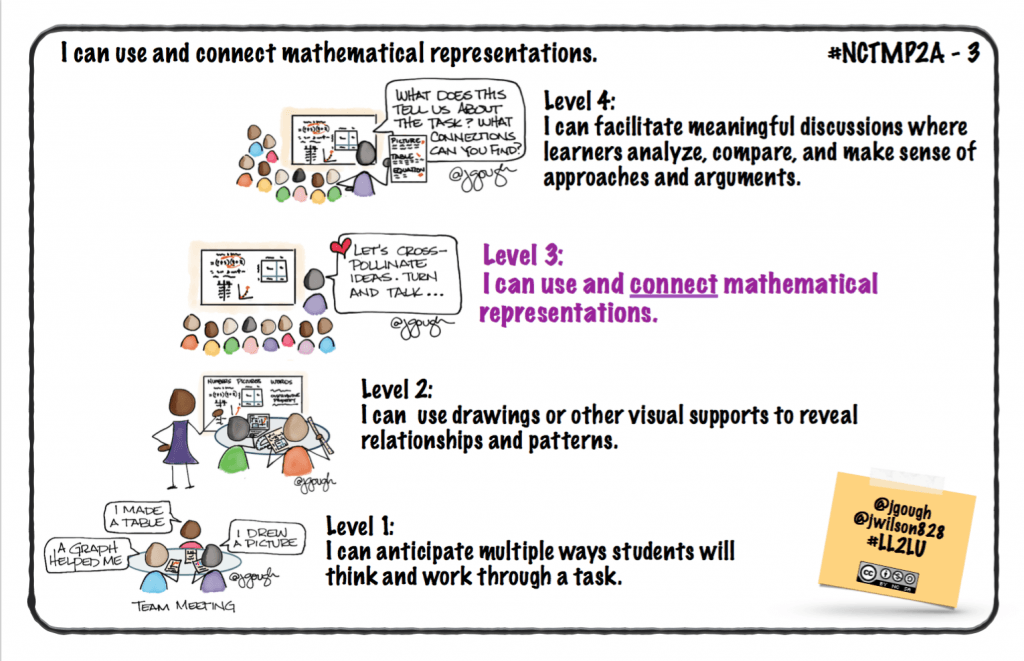
- I can show my work so that a reader understands without have to ask me questions.

Tasks:
- Beanie Boos (see slide deck)
- Number Talks
- What do the standards say?
Addition and Subtraction
2nd Grade
Add and subtract within 1000, using concrete models or drawings and strategies based on place value, properties of operations, and/or the relationship between addition and subtraction; relate the strategy to a written method. Understand that in adding or subtracting three-digit numbers, one adds or subtracts hundreds and hundreds, tens and tens, ones and ones; and sometimes it is necessary to compose or decompose tens or hundreds.
3rd Grade
Fluently add and subtract within 1000 using strategies and algorithms based on place value, properties of operations, and/or the relationship between addition and subtraction.
4th Grade
Fluently add and subtract multi-digit whole numbers using the standard algorithm.
Multiplication
3rd Grade
Multiply one-digit whole numbers by multiples of 10 in the range 10-90 (e.g., 9 × 80, 5 × 60) using strategies based on place value and properties of operations.
4th Grade
Multiply a whole number of up to four digits by a one-digit whole number, and multiply two two-digit numbers, using strategies based on place value and the properties of operations. Illustrate and explain the calculation by using equations, rectangular arrays, and/or area models.
5th Grade
Fluently multiply multi-digit whole numbers using the standard algorithm.
Slide deck:
[Cross posted on Experiments in Learning by Doing]
Gough, Jill, and Jennifer Wilson. “#LL2LU Learning Progressions.” Experiments in Learning by Doing or Easing the Hurry Syndrome. WordPress, 04 Aug. 2014. Web. 11 Mar. 2017.
Leinwand, Steve. Principles to Actions: Ensuring Mathematical Success for All. Reston, VA.: National Council of Teachers of Mathematics, 2014. (p. 21) Print.
“Number & Operations in Base Ten.” Number & Operations in Base Ten | Common Core State Standards Initiative, National Governors Association Center for Best Practices and Council of Chief State School Officers.




